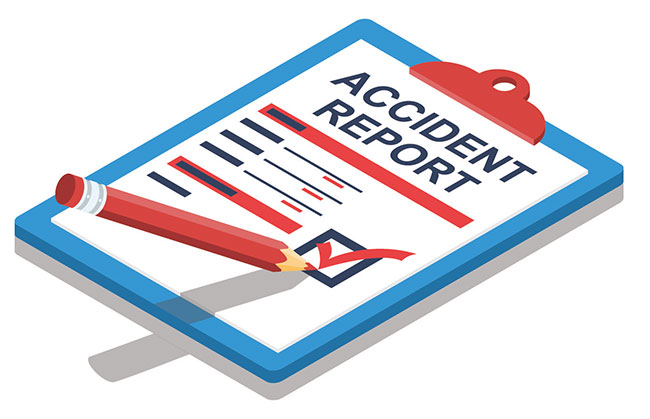As a laser safety officer and adviser, I am often asked, “How many laser accidents happen per year?” Unfortunately, there is no clear
answer. Why? Because many organizations do not provide clear internal
protocols for reporting such accidents. And even organizations that do offer
limited guidance on what constitutes a laser accident often offer inconsistent reporting protocols and no independent system for disseminating such information externally.

Courtesy of iStock.com/Anastasiia_New.
By absolute numbers, no organization logs more laser incident reports than the Federal Aviation Administration (FAA), which numbered 9723 accounts in 2021 (up from 6852 in 2020). This reporting volume is the highest in a single year for any organization, and the most since the FAA started tracking such events. The overwhelming number of these reports involved laser illumination of occupied commercial aircraft. While the FAA’s clear definition of what constitutes a laser-based incident makes such incidents easier for the organization to track and report, its definition is too limited for broader use.
The U.S. Department of Energy (DOE) is another organization that diligently maintains internal reports and investigations of laser-related accidents, and its tight criteria for defining such accidents still leaves room to report a wide range of accidents, from procedural violations to actual injuries. By DOE’s measure, approximately 69 laser-related accidents have occurred within its complex since 2000, with only nine injuries.
The federal Occupational Safety and Health Administration (OSHA) also maintains a database for laser injuries. At last count, OSHA had recorded only 26 incidents since 1999. The majority, including six fatalities, were non-beam related. This begs the question of whether some beam-induced injuries were
improperly documented as unexplained eye damage or skin burns. While rare, OSHA has fined companies for laser safety violations.
The Center for Devices and Radiological Health (CDRH) is also among the organizations that extensively track
laser-related events on its searchable and public Manufacturer and User Facility Device Experience (MAUDE) database. Although CDRH invites reports of laser injuries, the majority of the events logged in the database are more related to product performance. They include fiber breakage, output variations, reports of lasers setting towels or operating room scrubs ablaze, as well as laser-induced airway fires.
A handful of state governments (for example, in Arizona, Massachusetts, and Texas) mandate timely reporting of laser injuries. In general, however, the state agencies that collect such data treat each report as a one-off and do not maintain them in a collective database.
The only reports kept by the U.S.
military — to my knowledge — are logged on the Laser Accident and Incident Registry (LAIR), which the Army Medical Research Detachment maintains. While the registry is an attempt to document and evaluate incidents, access to the information is not readily available.
I have spoken to a good number of universities and commercial firms that look closely into the incidents they have experienced. But few are so publicly minded as to share their findings openly. To be fair, their reticence might be due to the lack of a public format in which to share the information. The prospect of negative publicity or even litigation might also
disincentivize the sharing of laser
accident information.
Laser-related accidents have occasionally, if rarely, prompted legal action. Such actions are more common in the medical field, and they center on malpractice charges ranging from burns suffered by patients to death due to airway fires. In university settings, the legal implications typically do not extend beyond the question of whether an injured student qualifies as a worker covered by workers’ compensation regulations. Litigation in these cases is rare.
So, the question remains: How many laser-based accidents happen each year?
It could be argued that the answer
depends on whom you ask, how they qualify something as an accident, and how they report such accidents. Regardless, the fact remains that laser-based accidents are happening.
Although many perceive laser safety and accident reporting as a compliance chore, understanding the frequency as well as the circumstances and consequences of laser-related accidents can help organizations guide future training, beam controls, and compliance methods to reduce risk, injuries, and subsequent organizational costs.
As laser systems increasingly become turnkey instrumentation and proliferate beyond controlled laboratory settings, suitable laser safety practices, accident reporting, and sharing of protocols will become more important.
Consider, for example, the growing field use of lasers for forensic applications or for cleaning the surfaces of legacy artwork. The potential for injury is not always intuitive to untrained users.
There are images demonstrating the use of lasers to clean statues, in which no attention is paid to the possibility of laser energy reflecting off the statue’s surface or to the fumes the process might generate. It would be useful for the laser user community to be able to research whether such conditions have led to laser-related damage or injury. It would also be useful for equipment manufactures to have
access to this data.
Until we remove the fear and stigma of reporting laser-related accidents, the conditions surrounding these accidents will not change on a wide scale. Language matters here.
Consider, for example, how to frame a narrowly avoided laser injury. Rather than reporting it as a “near miss,” which invites the people involved to count themselves lucky and move on, such an event would be better labeled as a “good catch.” Placing a positive spin on the practice that helped avoid the accident would incentivize future reporting, sharing, or even codifying of the practice. The Laser Interferometer Gravitational-Wave Observatory uses this positive approach as part of its organizational culture.
Laser accidents continue to occur as some percentage of overall laser use.
This percentage may be small. But there is no way to diminish it further without a protocol for defining, reporting, and sharing accident data to help users to implement best practices and engineers to design better equipment.